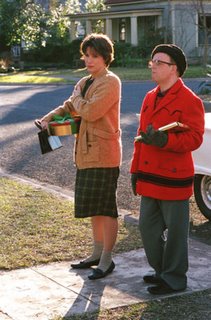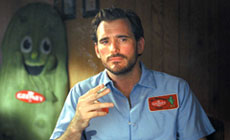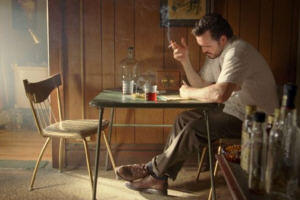
 Jack Kerouac and the Beat Generation
Jack Kerouac and the Beat GenerationToday is Jack Kerouac's birthday (1922-1969). His reputation has survived quips like Truman Capote's clever if evil line, "that's not writing, that's typing." While he was alive, academia (for the most part) dismissed him as a joke. Now whole courses are taught on the Beats; their books can be found in major bookstores or easily obtained online. They have been absorbed into mainstream culture, and even the originally derisive Cold War term "beatnik" has a nostalgiac ring.
But Beat writing is more about unconventional freedom of movement and alternative lifestyles than it is about nostalgia. There is no uniform philosophy. Some of the Beats embraced Zen Buddhism, some launched cultural and political critiques and jeremiads (Allen Ginsberg's "
Howl," Gregory Corso's "
Bomb"); Kerouac mostly told stories and chronicled his own life and the comings and goings of key friends. William S. Burroughs started with a variation of crime noir (
Junky) and moved through experimentation, drugs, voluntary exile, and the cut-up method (in collaboration with the artist
Brion Gysin) to create such controversial works as
Naked Lunch. The collective impact on interested parties in the 1960s was enormous, from Bob Dylan straight to the present. So happy birthday, Jack! Today your books live alongside Truman's and everybody be happy.
My sister Vickie told me Jack Kerouac's story when I was a teenager straight out of VMI. The first thing I read was an annotated copy of
On the Road from the library, which was perfect because the "critical section" set the novel within an understandable context. The novel itself inspired me in many ways, but perhaps most imporantly it opened up possibilities for striking out on the road and living in unconventional ways. Between that and miraculously surviving a dramatic car wreck completely unscathed (the car flipped over and spun around a few times before landing in a watery ditch), I was ready to GO! And away I went over the span of just four or five blindingly short years -- to New England with my friend Kenny Randall where we met Baba and Louise Toumajan; to Europe on a college trip where I got to know my friend Bill Caughlin; around the country by car with my sister Linda Stine, visiting relatives and Beat shrines along the way in Denver, San Francsico, New Orleans and elsewhere; to Mardi Gras with Bill; to Europe again, with Suzanne DePalma; to Manhattan and the Beat hangouts there; to Boulder, Colorado, with my friend Evan Farris to visit his sister Amy Farris (now Amy Kilbride) -- I'm talking thirty to forty hour car rides, hallucinatory experiences, for sure --then driving with my sister Vickie Charabati to St. Paul, Minnesota, where she was moving. And in the middle of all these travels, I got a job at
Algonquin Books of Chapel Hill and plugged into the literary world via publishing, as well. Certainly, it all makes more sense now than it did at the time! And certainly no regrets. I still get the travel bug, though I've come to appreciate (and can better afford) airplanes to get from place to place!
Kerouac married Edie Parker of Grosse Pointe; he stayed in the area from time to time, frequenting the still-functioning
Rustic Cabins bar in Grosse Pointe Park, and the temporarily defunct Wooden Nickel (on Mack Avenue) in an earlier incarnation. "There's no tragedy in Grosse Pointe," Jack proclaimed then, but if he had lived to see it, he'd come to know that on the contrary, there's plenty of tragedy in Grosse Pointe -- just like everywhere else.
A vast storehouse of Kerouac's papers are now owned by the New York Public Library; pleasingly, the same institution recently acquired William S. Burroughs' papers, too. Burroughs' importance will be better understood in due time.
On the road,
adieu for now. . . . .
































